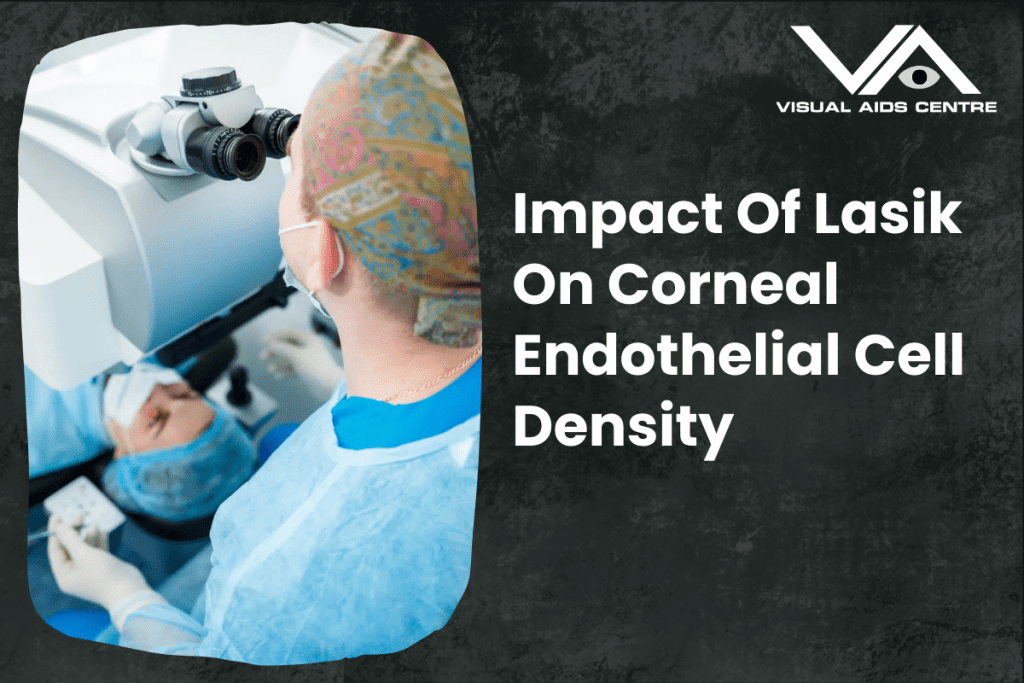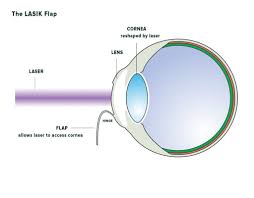Table of Contents
ToggleLASIK does not appear to cause significant long-term changes in corneal endothelial cell density in healthy eyes.
However, careful consideration and monitoring are crucial in specific cases, such as pre-existing corneal conditions.
Corneal endothelial cells play a vital role in maintaining corneal clarity by regulating fluid balance within the cornea. Individuals considering LASIK, whether ophthalmologists, eye surgeons, or patients, often raise concerns regarding the long-term impact of this surgical procedure on corneal endothelial cell density. This blog takes a closer look at the relationship between LASIK and corneal endothelial health, supported by research and clinical insights.

Understanding Corneal Endothelial Cell Density
The corneal endothelium is the innermost layer of the cornea, responsible for maintaining corneal transparency by managing hydration levels. Endothelial cell density (ECD) refers to the number of endothelial cells per square millimetre of corneal surface. A healthy endothelium is crucial, as it pumps out excess water from the cornea, preventing oedema and loss of transparency.
On average, healthy adults have an endothelial cell density of 2,500 to 3,000 cells per square millimetre, though this gradually declines with age. Significant decreases in ECD can affect corneal function, potentially leading to conditions such as corneal decompensation. For this reason, understanding how LASIK affects these cells is a priority for both clinicians and patients.
LASIK and Its Mechanism of Action
LASIK (Laser-Assisted in Situ Keratomileusis) is one of the most popular refractive surgeries, used to correct myopia, hyperopia, and astigmatism. The procedure involves the reshaping of the corneal stroma using an excimer laser. A thin corneal flap is created and temporarily lifted, allowing access to the stromal layer where the laser ablates tissue to alter the refractive power of the eye.
Advances in LASIK technology have improved surgical precision, reduced complications, and shortened recovery times. However, because the procedure directly interacts with the cornea, understanding its impact on deeper corneal layers, such as the endothelium, is critical.
Impact of LASIK on Corneal Endothelial Cells
Immediate Effects of LASIK on the Endothelium
Research has shown that LASIK has minimal immediate effects on the corneal endothelium in healthy eyes. Because the excimer laser operates on the anterior stroma, it generally does not directly damage the endothelium. However, certain surgical factors can indirectly influence endothelial health:
- Transient Mechanical Stress: The creation of the corneal flap induces some mechanical stress, which may temporarily alter endothelial cell function.
- Rise in Intracorneal Pressure: The use of suction rings during LASIK can temporarily increase intracorneal pressure, potentially impacting endothelial cell integrity.
Most studies indicate that corneal endothelial cell density shows no significant change during the early postoperative stages.
Long-Term Impact on Endothelial Cell Density
One of the most discussed questions is whether LASIK causes gradual changes in endothelial cell density over time. Multiple longitudinal studies have consistently observed that LASIK does not lead to a clinically significant reduction in corneal endothelial cell density in the long term.
Researchers have conducted follow-ups extending up to five or even ten years, concluding that endothelial cell loss after LASIK is within the natural range attributed to ageing—approximately 0.5% per year.
Factors That Could Influence ECD Post-LASIK
Here are some factors that may influence corneal endothelial cell behaviour after LASIK:
1. Pre-existing Corneal Conditions:
Patients with compromised preoperative endothelial health (e.g., Fuchs’ endothelial dystrophy or history of ocular trauma) might experience higher risks of endothelial cell loss.
2. Surgical Complications:
Rare intraoperative complications, such as corneal flap irregularities or severe inflammation, could indirectly affect the endothelium.
3. Fluid Dynamics During Surgery:
The use of a balanced salt solution during surgery washes the corneal bed but may cause minor transient functional changes to endothelial cells.
4. Patient-Specific Responses:
Individual differences in wound healing and immune response can marginally impact endothelial function, though these effects are usually temporary.
Clinical Studies on LASIK and ECD
Several well-documented studies provide valuable insights:
- A widely cited study (2017) revealed no significant changes in endothelial cell density in healthy patients before LASIK and at intervals of 3 months, 1 year, 4 years, 8 years, and 12 years post-procedure.
- A study (2012) followed up with participants for five years post-LASIK and concluded that long-term endothelial cell loss was comparable to physiological ageing.
- Studies (2017) leveraging high-resolution specular microscopy reaffirm that while LASIK causes transient changes in corneal hydration, the endothelial cells remain stable.
These studies emphasise that, in the absence of pre-existing corneal diseases, LASIK poses minimal risk to endothelial health.
Monitoring Endothelial Health in LASIK Patients
Preoperative Evaluation
Thorough preoperative evaluation is critical to mitigate risks. Patients undergoing LASIK should have their corneal endothelium examined using specular microscopy to ensure adequate cell density and morphology. This is especially important for patients with a history of eye surgeries, trauma, or systemic diseases such as diabetes.
Postoperative Care
Postoperative monitoring of corneal health is vital, particularly in patients with borderline cell counts or predisposing conditions. Clinicians should look out for signs of corneal oedema, inflammation, or other complications that could indirectly affect endothelial function.
Alternative Procedures for High-Risk Patients
Patients with compromised endothelial density may benefit from alternative refractive procedures such as PRK (Photorefractive Keratectomy), which does not involve the creation of a corneal flap and poses less risk for intracorneal pressure increases.
Research Opportunities and Emerging Insights
While current evidence largely supports the safety of LASIK with regard to corneal endothelial cells, there are areas ripe for further research. For instance, newer LASIK technologies such as femtosecond laser-assisted LASIK (FS-LASIK) may further reduce the mechanical and fluid stress on corneal layers, potentially minimising the risk even further.
Additionally, understanding the molecular changes in endothelial cells post-LASIK could provide more clarity. Techniques like in vivo confocal microscopy hold promise in offering deeper insights into endothelial behaviour post-surgery.
Key Takeaways for Patients and Clinicians
- LASIK is generally safe for corneal endothelial cells in eyes with healthy preoperative assessments.
- The minor risks associated with LASIK and endothelial cell density primarily concern individuals with existing comorbidities or higher ocular pressure sensitivity.
- Ensuring comprehensive preoperative and postoperative care can minimise risks and optimise outcomes.
Final Thoughts
For ophthalmologists, surgeons, and patients alike, understanding the effects of LASIK on corneal endothelial cell density is critical for informed decision-making. Current evidence consistently supports LASIK as a safe and effective procedure for corneal health when appropriate screening protocols are followed.
If you’re considering LASIK or advising a patient, prioritise thorough corneal assessments, individualised surgical planning, and diligent follow-up care for the best outcomes.













